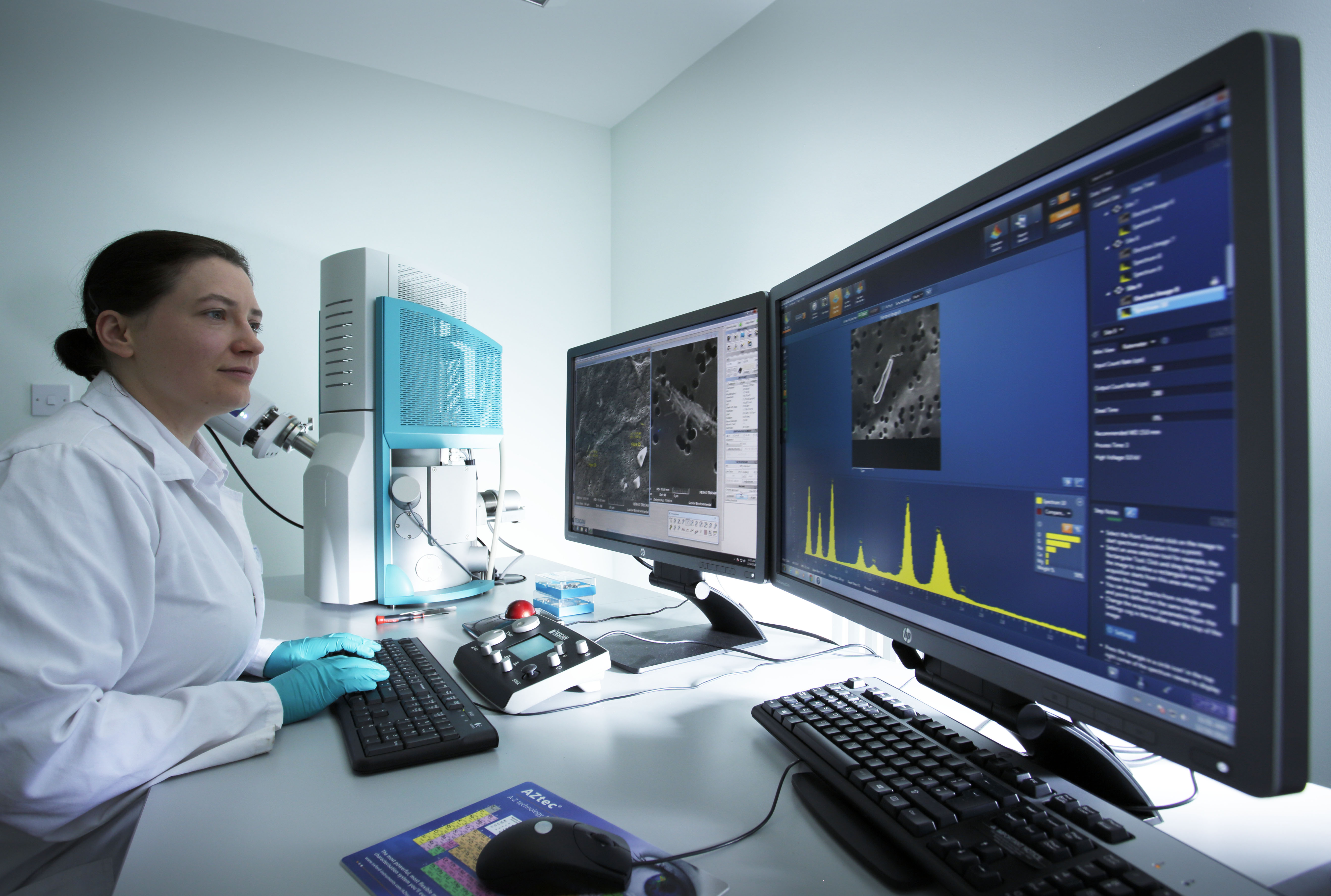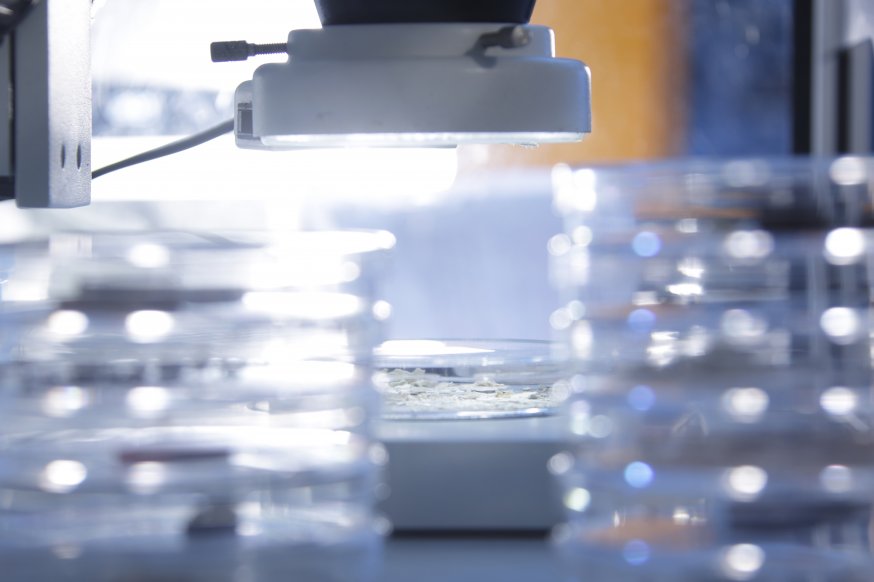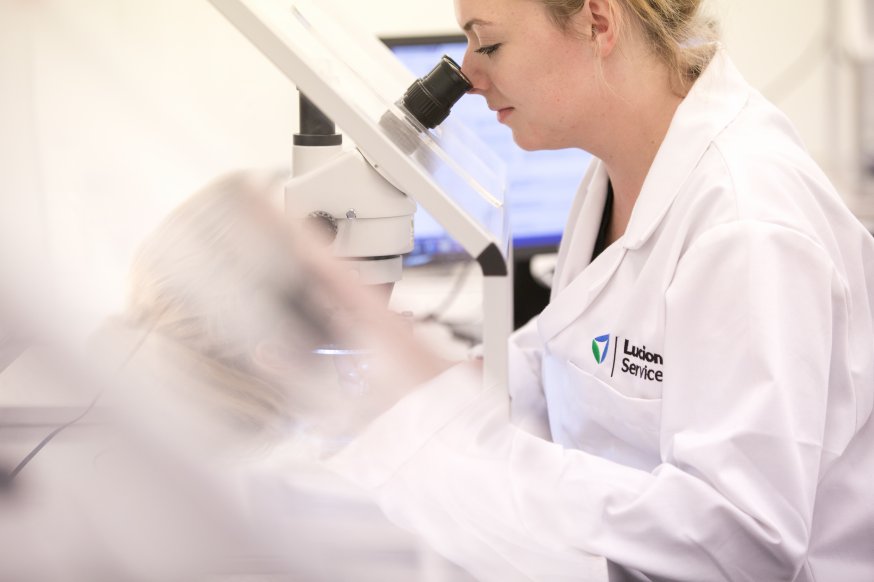
Lucion Services, providers of holistic environmental services, is UKAS ISO 17025 accredited for airborne asbestos fibre determination and fibre counting using Scanning Electron Microscopy (SEM) and Energy Dispersive Spectroscopy (EDS).



The white paper has been designed to provide important information to those who work in schools, in particular those who are responsible for the maintenance of the property and teachers. Our white paper outlines why the UK ought to adopt measures in force in other European nations, who already share the same overriding EU legislation Directive 2009/148/EC on the protection of workers from the risks related to exposure to asbestos.
_1.png)
Download From NexGen

Does your team know what to do in the event that they find asbestos? Use our simple asbestos discovery flowchart to inform your teams about what to do when suspected asbestos is discovered.
Download Now
What is Scanning Electron Microscopy (SEM)?
Scanning Electron Microscopy is a more powerful way of analysing hazardous material samples. Analysis through using Scanning Electron Microscopy (SEM) enables magnification of samples of up to 200,000x, with fibre counting at 2000x, in comparison to 500x magnification when using a Phase Contrast Optical Microscope (PCOM or PCM) method.
At Lucion, we use SEM analysis primarily for analysing airborne asbestos fibres in high traffic buildings where asbestos is being managed in situ, providing our clients with conclusive evidence of asbestos fibres in air samples and greater risk analysis and associated management capability.
Why should I use Scanning Electron Microscopy (SEM) over Phase Optical Contrast Microscopy (PCM or PCOM) for asbestos air monitoring
Reassurance air monitoring by PCM/PCOM, commonly to a limit of detection of 0.01 f/cm3. This technique is useful for detecting airborne asbestos fibres where asbestos is known to have been disturbed. However, PCM/PCOM is inadequate for detecting airborne asbestos fibres in buildings where asbestos fibres may be released at lower levels over a long period of time. In buildings where high traffic occupancy is experienced such as schools or hospitals, where doors are regularly used, walls are knocked in to etc, the integrity of the building degrades faster than low occupancy buildings. This means any asbestos contained within the building is also likely to degrade at a faster rate within high occupancy buildings resulting in long term, low level asbestos exposure to the building occupants.
Current government policy for many public buildings is to leave asbestos in situ and manage it through preventing disturbance to the hazardous substance by implementing control measures. This approach is sensible and pragmatic for low risk, well-bounded materials and provides a great solution for many public buildings and business owners. However, this method of asbestos management does not adequately control the risks presented by higher risk materials such as asbestos insulation boards, lagging and sprayed coating or for situations where the building is likely to degrade faster than a low use building space.
Air monitoring via SEM has a limit of detection of 0.0005 f/cm3 and can determine long-term occupational exposure levels, produced by normal building occupation. SEM is the best practicable technique for determining the asbestos risk in buildings known to contain asbestos that is being managed in situ.
Accredited SEM services
As our lab is Europe’s largest asbestos testing laboratory, all of our asbestos testing activities are subject to strict assurance measures to ensure integrity and impartiality. Our BOHS qualified SEM analysts participate in proficiency schemes administered by the Health and Safety Laboratory for external integrity monitoring;
Our laboratory quality assurance is managed by a Laboratory Assurance Manager (reporting into the Assurance Team) separate from laboratory operations and workload, managed by the Laboratory Manager.
What are my responsibilities?
If you are the duty holder, you are required to manage your asbestos risks in line with the Control of Asbestos Regulations (CAR) 2012.
Lucion Services is the UK’s market leader in asbestos management. We work independently from all licensed asbestos removal contractors (LARC), operating only in asbestos inspection and testing services. We have an independent assurance team internally to impartially monitor our performance so you can be assured we will always take the legal, regulatory or guidance recommended standpoint on asbestos issues and will never act with bias.
Contact our team today. Click 'Make an Enquiry' now or give our team a call on 0345 5040 303.
Download a printable PDF of this page